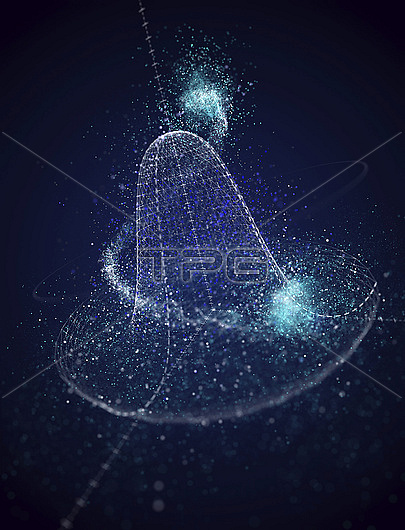
Visualisation of the Brout-Englert-Higgs (BEH) field, an invisible field which pervades the universe filling all of space. The Higgs boson is like a tiny ripple or vibration in this BEH field. The field is significant because it gives mass to certain particles that interact with it. Mathematically, the shape of the field resembles a Mexican hat where the Higgs boson corresponds to an abstract movement around the rim of the hat. The BEH mechanism proposed in 1964 enables the universe (turquoise) to transition from a symmetric state at the top of the hat to an asymmetric but more stable position in the rim. Before this spontaneous symmetry breaking event took place a fraction of a nanosecond after the Big Bang, the electromagnetic and weak forces were unified and elementary particles had no mass; afterwards, the universe was left with a non-zero vacuum expectation value that enabled elementary particles to acquire mass and thus for nuclei and atoms to later form. Probing this critical transition in the early universe is possible through high-energy proton-proton collisions at the Large Hadron Collider (LHC) at CERN (European Particle Physics Laboratory). Results suggest that the rim of the hat might not be the lowest state of the Brout-Englert-Higgs potential. This could have potential implications for the long-term stability of the universe.
| px | px | dpi | = | cm | x | cm | = | MB |
Details
Creative#:
TOP29675998
Source:
達志影像
Authorization Type:
RM
Release Information:
須由TPG 完整授權
Model Release:
N/A
Property Release:
N/A
Right to Privacy:
No
Same folder images:
Restriction:
Editorial use only. This image may not be used to state or imply endorsement by CERN or CERN employees of any product, activity or service. Not to be used in a military context.

 Loading
Loading